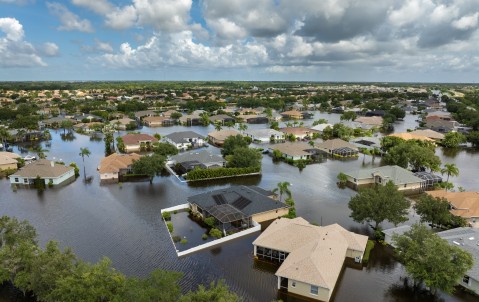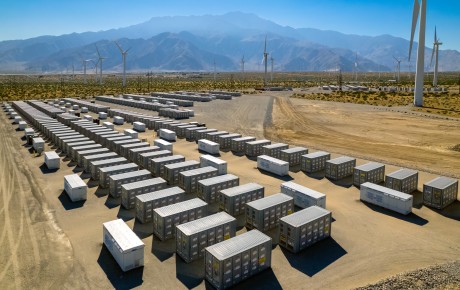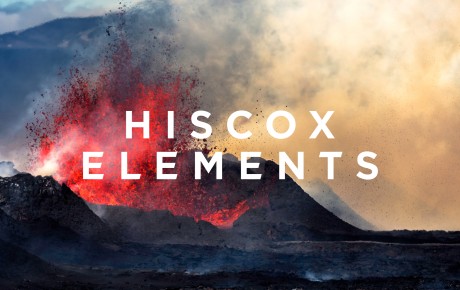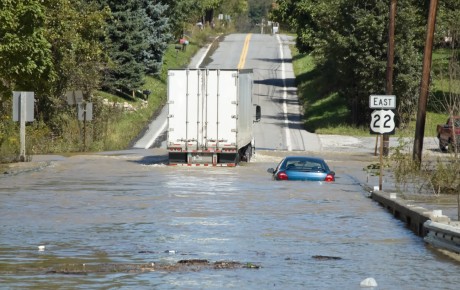
The five most common reasons why US homeowners don’t buy flood insurance
Following the flooding devastation caused by Hurricane Helene across multiple US States last September, the lack of appropriate insurance cover in place has come into sharp focus. In some of the hardest hit areas of North Carolina, less than 1% of homeowners had flood insurance and, despite flooding being the most frequent natural hazard in the US, fewer than 12% of homeowners nationally have flood cover. So, why do so many homeowners in the US continue to forego flood insurance despite the increasing scale and nature of flood risk across the country?
Pia Boileau, Flood Underwriter for Hiscox London Market lists the five most common reasons, drawn from Hiscox’s research and experience, as to why US homeowners don’t buy flood insurance and what the government, regulators and the private insurance market can do to improve take-up across the country.
1. Lack of awareness of flood risk
Many US citizens do not believe they could be a possible flood victim. "Why would anyone buy flood insurance if they don't believe they are vulnerable to flood risk?" says Pia. "There is a lack of awareness and understanding of the real risk of flood to properties, particularly for those positioned inland. Part of the reason is many tend to only think about flooding caused by rainfall events or coastal surges from hurricanes or large storms, whereas we have seen flooding from other causes such as extensive snow melt related to fluctuating temperatures – events that are becoming more common amidst a changing climate.” Correcting this perception of flood risk requires better communication with homeowners. Pia adds: “Working closely with coverholders and retail agents, the insurance industry needs to continue to publicise the increased risk of flooding even for properties that have historically not flooded.”
2. Affordability
Even if a homeowner is advised there is a flood risk, is the additional cost of a flood policy likely to be a barrier? “Many of our coverholders say price is the main factor deterring individuals from purchasing a flood policy. If a minimum additional flood premium is, say, US$350 on top of their homeowners policy, some homeowners would rather take the risk. However, our FloodPlus platform uses enhanced analytics and has allowed us to bring our minimum premium down from US$350 to US$125 in all B, C and X Flood Zones, which is great value to a homeowner seeking peace of mind," says Pia.
3. An expectation that they’re already covered
Some homeowners believe they are already protected from flood risk under their existing homeowners insurance. "Unless told explicitly otherwise, there can be confusion as to what is covered and what is not under their current insurance arrangements," says Pia. “That can include flood, which is why it’s so important to be clear at the point of purchase as to whether or not a homeowner has bought flood cover and, if they haven’t, what their risk of a flood event could be.”
4. Outdated flood maps
The Federal Emergency Management Agency (FEMA) classifies low-risk flood zones as areas outside the Special Flood Hazard Area (SFHA), typically labelled B, C, or X on flood maps. While these zones are considered lower risk, they are not immune to flooding and flood insurance claims still originate from these areas. Many homeowners living in these zones, however, have an overly optimistic view of their chances of not being flooded. In the case of Hurricane Debby, 78% of flooded properties were located outside FEMA-designated flood zones, while 20% of the National Flood Insurance Program’s (NFIP) claims relate to properties located outside high-risk flood areas. “The widely held view of risk has not necessarily kept pace with shifting climate factors that mean more people are now exposed to flood risk. Improvements to FEMA’s maps used to explain the flood risk to customers would provide the insurance industry with a better chance of selling the option of flood cover to homeowners if they realised the true risk to their properties," explains Pia.
5. No regulatory requirement to buy
Flood insurance for homeowners with federally-backed mortgages is only compulsory for higher risk flood zones. Should this change? "If flood insurance was compulsory across all of FEMA's flood zones, this would help protect many more homeowners. This is likely to be unpalatable in many states, but again, lower premiums might remove much of the opposition to wider insurance take-up," says Pia.
No silver bullet
As the US flood insurance market, and the risk, continue to evolve, Pia reflects on the progress that’s already been made. “We have already seen the availability of flood cover and the buying journey improve significantly in recent years, with increased choice and flexibility for customers. At Hiscox, we have also launched our lower minimum premium for risks in B, C and X flood zones which goes hand in hand with more targeted communications about the flood risk for homeowners in areas previously considered not at risk. We are in the business of risk, and prevention and protection matter as much to us as they do to our customers.”




